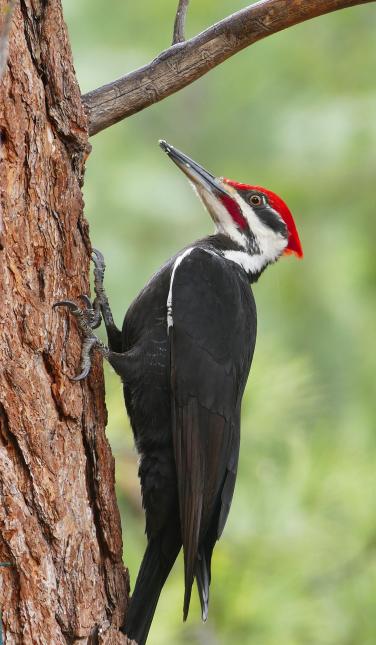Woodpeckers in Florida: Recognition Tips and Habitat Preferences
Woodpeckers in Florida: Recognition Tips and Habitat Preferences
Blog Article
Unveiling the Secrets of Woodpeckers: Actions, Environment, and More
Woodpeckers, with their distinct behaviors and specialized adjustments, have lengthy attracted scientists and nature lovers alike. By discovering the enigmas bordering woodpeckers' habits and habitat selections, a much deeper understanding of these bird wonders emerges, supplying a glimpse right into their fascinating globe.
Woodpecker Actions Insights
In taking a look at woodpecker habits, a fascinating display screen of specialized skills and adjustments arises, dropping light on their amazing ecological particular niche - Woodpeckers in Florida. Woodpeckers, recognized for their distinct drumming on trees, possess a variety of behavioral qualities that contribute to their survival and success in their setting. One vital behavior is their drumming, which serves numerous functions such as communication, establishing region, attracting companions, and locating food resources. This balanced pecking likewise showcases their impressive stamina and endurance, as they can hammer away continuously at high speeds without triggering injury to themselves.
Additionally, woodpeckers exhibit a special feeding actions identified by their capacity to essence pests from tree bark using their specialized beaks. Their long, barbed tongues help in recording prey, while their strong neck muscles provide stability and accuracy throughout pecking motions. This feeding technique allows woodpeckers to gain access to hidden insect larvae and remove them with remarkable efficiency.
Habitat Preferences and Selection
What variables affect the environment choices and selection of woodpeckers? One crucial element influencing woodpecker environment option is the schedule of suitable nesting sites. Woodpeckers usually prefer forests with a mix of fully grown trees that supply ample possibilities for tooth cavity excavation.
In addition, woodpeckers reveal a preference for environments with an abundant supply of food resources. They are largely insectivorous, feeding on beetles, ants, larvae, and other bugs found in rotting wood or tree bark. Woodpeckers tend to prefer wooded areas with a diverse insect populace to satisfy their dietary demands.
Moreover, the existence of dead or rotting trees is another crucial consider woodpecker habitat option. These trees not only offer food sources yet likewise supply ideal substratum for cavity excavation. Dead trees are important for the upkeep of healthy woodpecker populaces, as they play an essential role in the woodpeckers' life cycle and environment dynamics.
Feeding Behaviors and Diet Composition
Woodpeckers show a specialized feeding behavior concentrated on foraging for pests within numerous habitats. Their diet regimen primarily includes bugs such as beetles, ants, caterpillars, and crawlers, which they locate by tapping on tree bark and paying attention for the sound of movement inside. Woodpeckers use their solid beaks to pierce right into the timber recommended you read and their long, barbed tongues to draw out target from crevices. In addition to bugs, woodpeckers likewise eat tree sap, fruits, nuts, and seeds, including selection to their diet regimen relying on the period and accessibility of food resources.
The foraging strategies of woodpeckers are well-adapted to their arboreal lifestyle. Woodpeckers play an essential duty in maintaining the health of woodlands by regulating insect populations and assisting in the decomposition of timber.
Drumming Appears and Interaction
Using quick drumming sounds on numerous surface areas, woodpeckers use an unique form of interaction to indicate region borders and bring in companions. This drumming habits is not only you could check here a way of interaction but likewise functions as a method for woodpeckers to establish their existence within a certain area. The intensity, speed, and pattern of the drumming can convey crucial information to other woodpeckers in the location.
Woodpeckers utilize drumming noises to introduce their presence in a region and to caution off possible burglars. The loud and recurring nature of the drumming works as a clear signal to other woodpeckers that the area is currently claimed. This assists in reducing problems and reducing physical battles between people.
:max_bytes(150000):strip_icc()/GettyImages-1094628502-a831e9c1be004c05b057f488ff819127.jpg)
Survival Adaptations and Specialized Anatomy

Verdict
In final thought, woodpeckers display special actions, such as drumming sounds for interaction, and have actually specialized makeup for survival in their chosen habitats. Their feeding behaviors and diet plan structure better show their flexibility to numerous settings. By recognizing these facets of woodpeckers, scientists and guardians can better safeguard and maintain these fascinating birds and their ecological communities.
Report this page